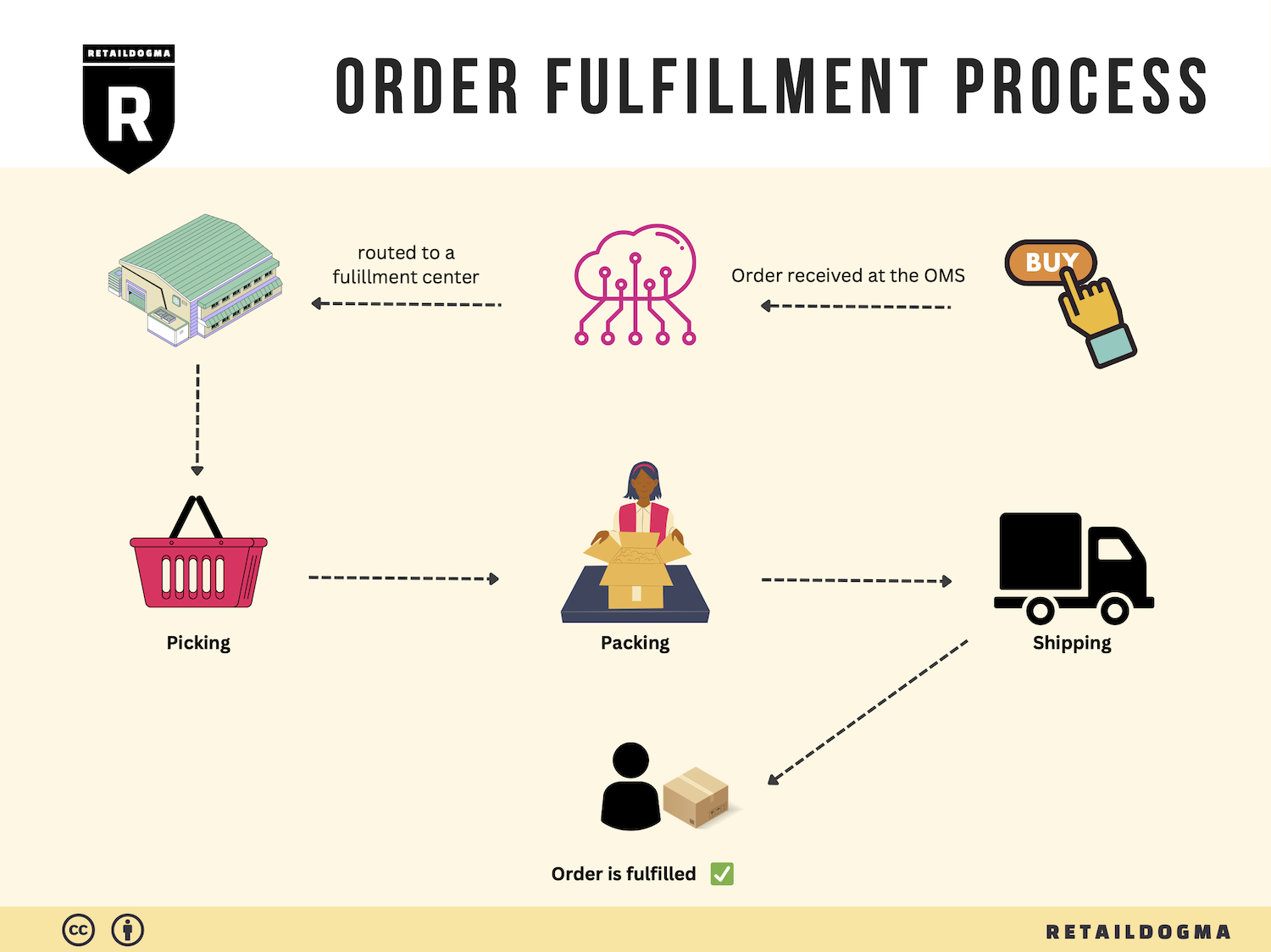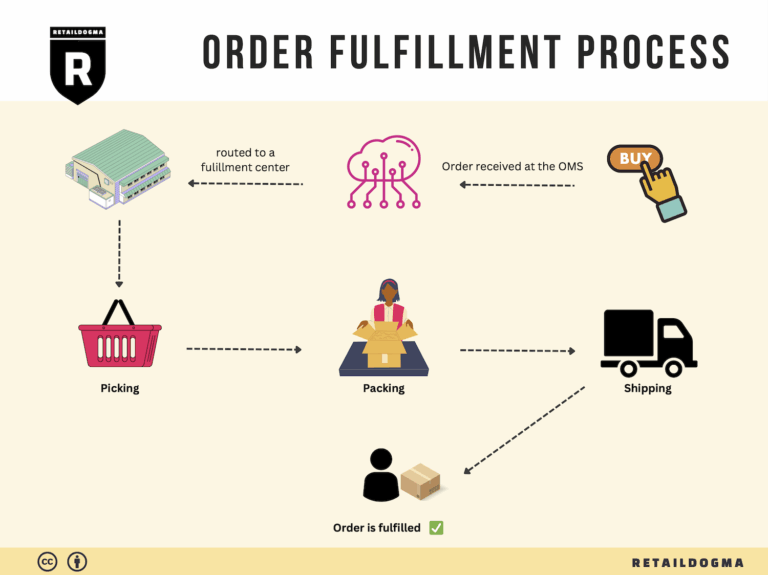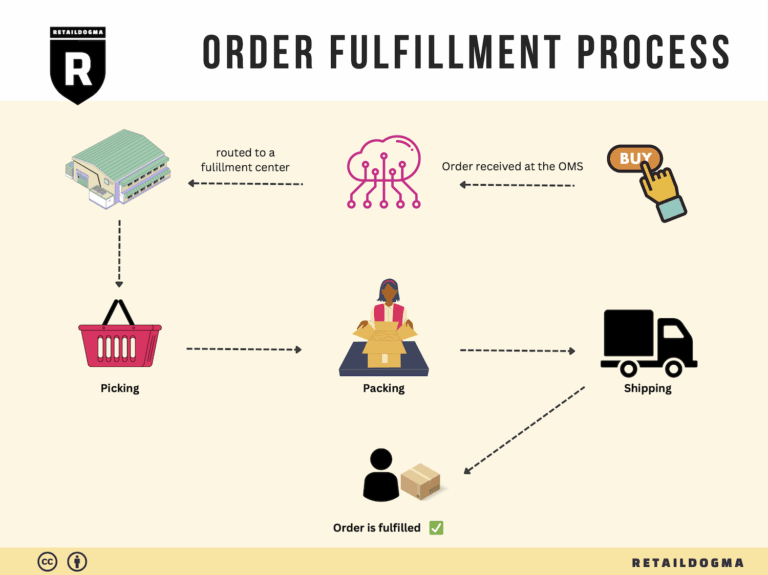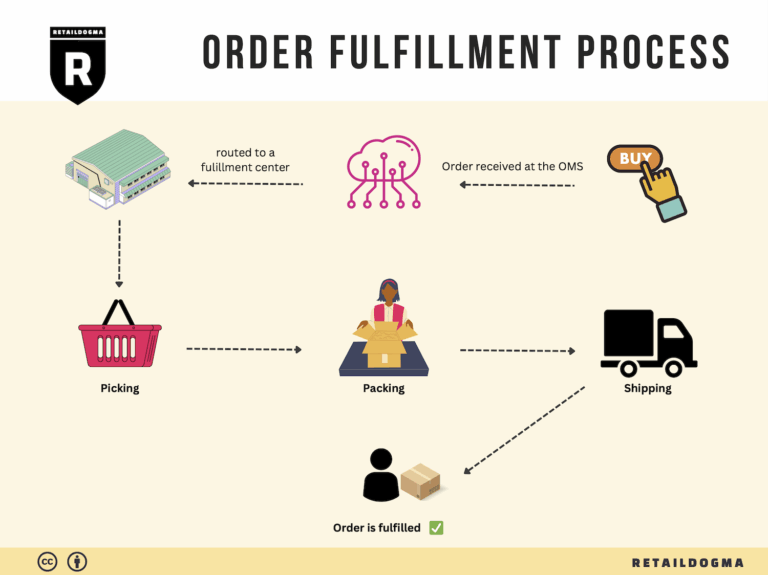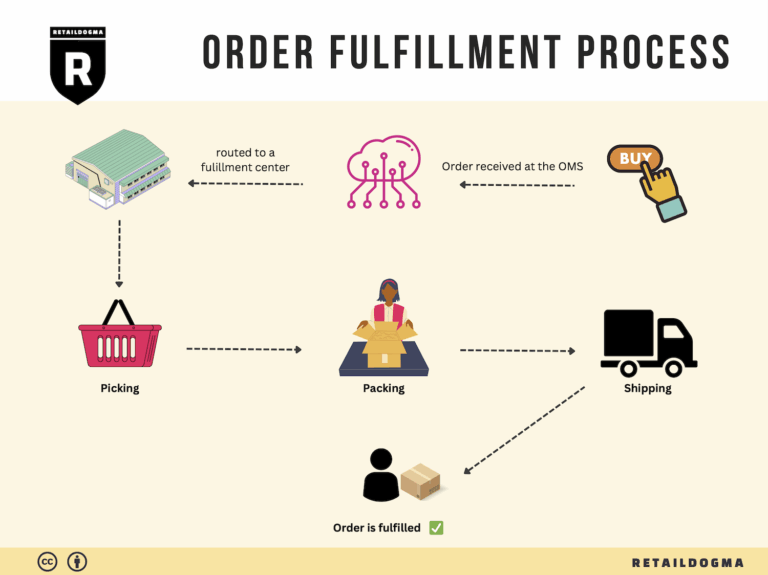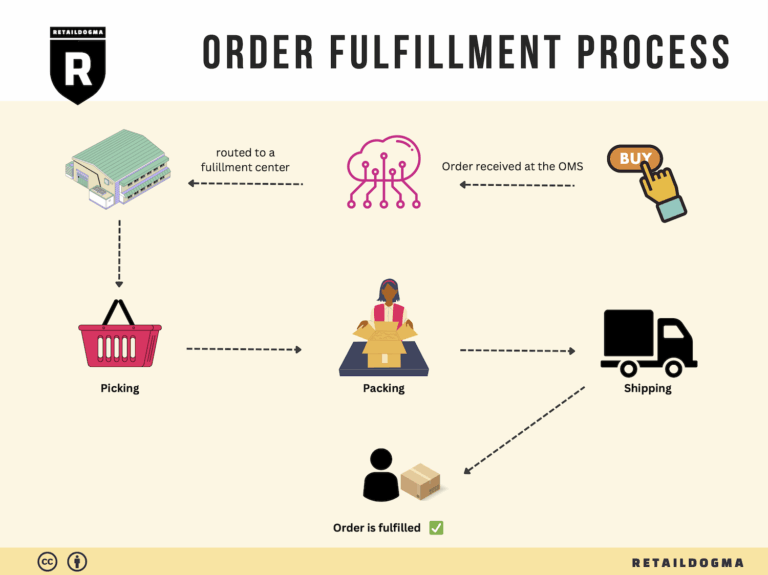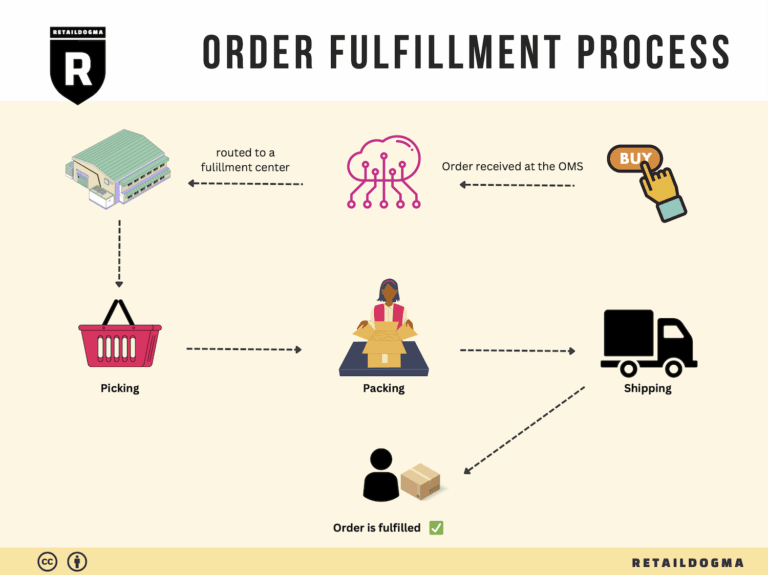Ecommerce Fulfillment Services: The Ultimate Guide (2025)
What is E-commerce Fulfillment? An Introduction for Growing Businesses
Understanding the Challenges of E-commerce Fulfillment
For many growing e-commerce businesses, the excitement of scaling sales can quickly turn into a daunting challenge when it comes to packing and shipping orders. As customer expectations for fast and reliable delivery continue to rise, managing the logistics of fulfillment can feel overwhelming. This is where the importance of understanding e-commerce fulfillment becomes crucial. At its core, fulfillment is the process of getting a product from your warehouse to the customer’s doorstep, encompassing everything from inventory management to order processing and shipping.
Key Components of E-commerce Fulfillment
In this guide, we will explore various fulfillment models that can help streamline your operations. You will learn about Third-Party Logistics (3PL) providers, Fulfillment by Amazon (FBA), and other options that can cater to your unique business needs. Each model has its own advantages and challenges, and understanding them will empower you to choose the best fit for your business.
We will also delve into the core services that fulfillment partners typically offer. These services include inventory management, order processing, packing, shipping, and returns management. By comprehensively understanding these services, you can ensure that your logistics are efficient and customer-centric.
Selecting the Right Fulfillment Partner
Choosing the right fulfillment partner is a significant decision that can impact your business’s growth trajectory. This guide will provide insights on what to look for in a partner, including their technological capabilities, industry experience, and customer service. We will also cover the importance of aligning your partner’s offerings with your specific business model and customer expectations.
Understanding Pricing Structures
Pricing is often a critical factor in selecting a fulfillment partner. We will break down common pricing structures used in the industry, helping you to navigate costs effectively and understand what to expect when budgeting for fulfillment services.
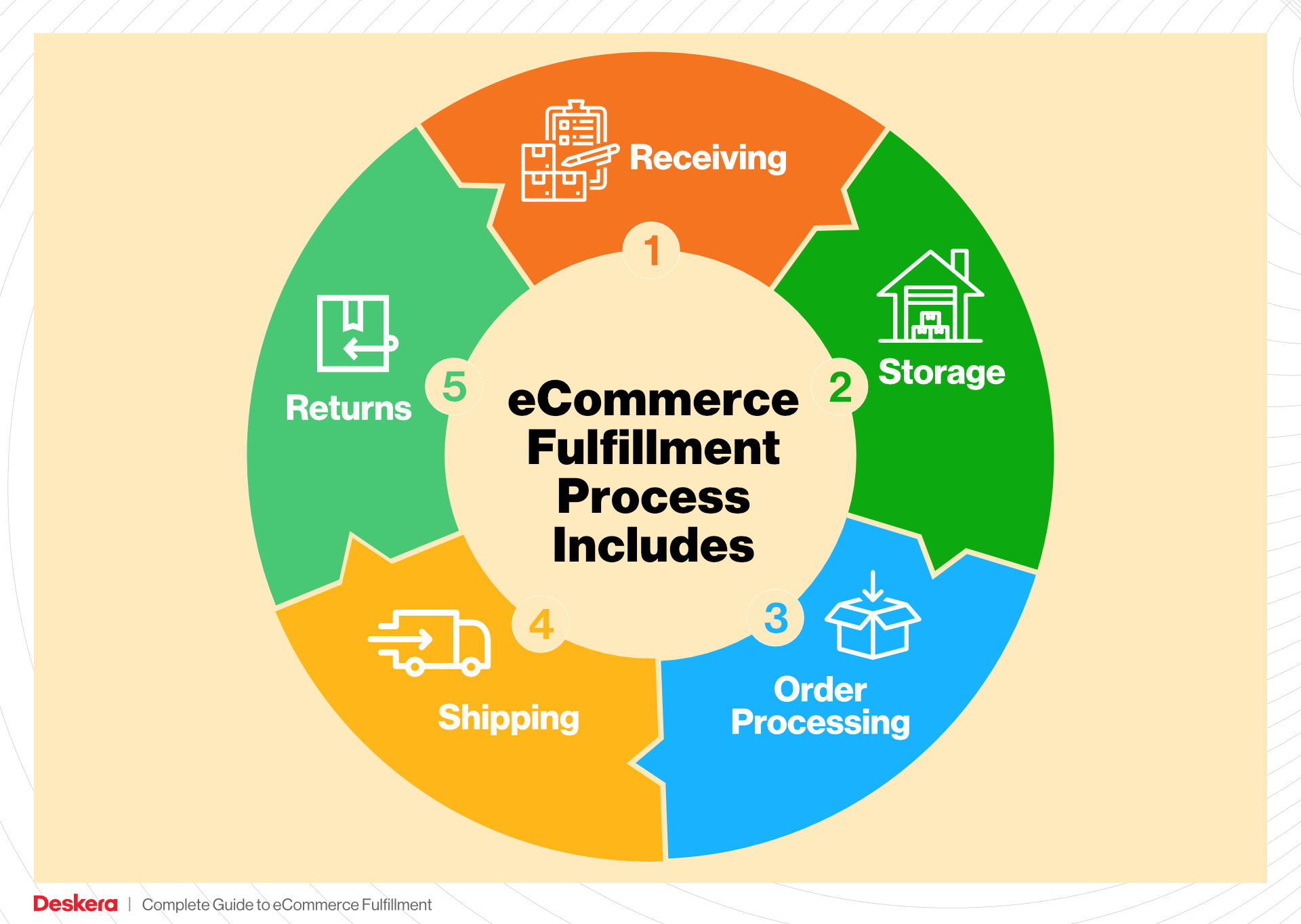
Empowering Your Business Decisions
Ultimately, this guide aims to empower e-commerce business owners, operations managers, and entrepreneurs to make informed and strategic decisions about their logistics. By equipping yourself with knowledge about e-commerce fulfillment, you can transform a potential pain point into a streamlined process that enhances customer satisfaction and supports your business growth. Let’s dive in and explore the world of e-commerce fulfillment together.
What You’ll Learn In This Guide
- What is E-commerce Fulfillment? An Introduction for Growing Businesses
- The Order Fulfillment Process: From ‘Buy’ Button to Customer’s Door
- Comparing Fulfillment Models: In-House vs. 3PL vs. Dropshipping
- A Deep Dive into Amazon FBA: Pros, Cons, and Who It’s For
- Core Services Offered by Fulfillment Centers
- How to Choose a Fulfillment Partner: A 6-Point Checklist
- Understanding Fulfillment Pricing: A Breakdown of Common Fees
- Frequently Asked Questions (FAQs) about Fulfillment
- Conclusion: Is Outsourcing Fulfillment the Right Move for Your Business?
- Important Disclaimer
The Order Fulfillment Process: From ‘Buy’ Button to Customer’s Door
1. Receiving Inventory
The first step in the order fulfillment process is receiving inventory. Upon arrival at the warehouse, products are checked against purchase orders to ensure accuracy in quantities and specifications. This process is critical for maintaining inventory integrity and involves the use of Stock Keeping Units (SKUs) to identify and track individual items. Each SKU corresponds to a unique product and helps streamline the receiving process.
Proper receiving procedures are essential to minimize discrepancies and errors. By accurately recording each item, businesses can avoid stockouts and overstock situations, which can impact sales and customer satisfaction. Moreover, a robust receiving process sets the foundation for efficient warehouse operations, ensuring that products are readily available for storage and picking.
2. Warehouse Storage
Once inventory is received and verified, it is then stored in the warehouse. Effective warehouse storage involves strategically organizing products in a manner that maximizes space and accessibility. This can include using shelving, bins, or pallet racking systems. The key term associated with this step is “location codes,” which help staff quickly locate items when needed.
Efficient storage solutions are crucial for reducing retrieval times during order picking. By utilizing technology such as Warehouse Management Systems (WMS), businesses can enhance inventory visibility and management. This not only improves operational efficiency but also ensures that stock levels are accurately reflected in real-time, facilitating better decision-making regarding reordering and inventory turnover.
3. Order Picking
The next step is order picking, where items are selected from storage based on customer orders. This process can be executed using various methods, including single order picking, batch picking, or wave picking, depending on the volume and type of orders. A critical tool in this phase is the “pick list,” which outlines the items and quantities needed for each order.
Order picking is vital for ensuring that the correct products are prepared for shipping. Efficiency in this step directly impacts order cycle time, which is a key performance indicator for fulfillment operations. Businesses that optimize their picking processes can significantly enhance customer satisfaction by delivering accurate orders promptly. Implementing technologies such as barcode scanners can further streamline this process, reducing human error and increasing speed.
4. Order Packing
After items are picked, they move to the order packing stage. Here, products are carefully packed to ensure they arrive at the customer’s doorstep in perfect condition. This step involves selecting appropriate packaging materials, such as boxes, bubble wrap, or foam peanuts, to protect the contents during transit. The term “packing slips” is relevant here, as they provide essential information about the order being shipped.
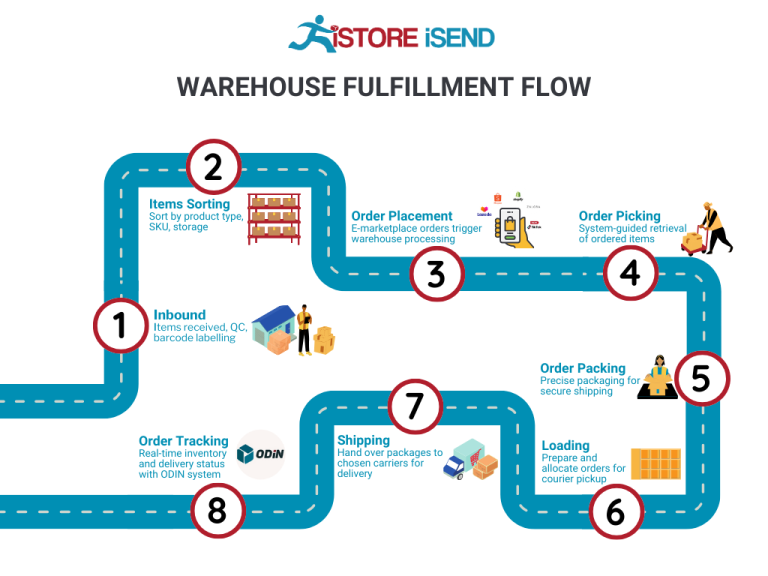
Packing is crucial for minimizing damage during shipping and enhancing the overall customer experience. Well-packed items not only reduce the likelihood of returns due to damage but also reflect a brand’s commitment to quality. Additionally, effective packing processes can optimize shipping costs by utilizing the right-sized boxes and materials, which can lead to significant savings over time.
5. Shipping & Delivery
The final step in the order fulfillment process is shipping and delivery. Once the order is packed, it is labeled and handed off to a shipping carrier for delivery. The importance of this step cannot be overstated, as it is the last touchpoint in the customer journey. Key terms associated with this phase include “tracking numbers,” which allow customers to monitor their order’s progress in real-time.
Efficient shipping processes are vital for meeting customer expectations, particularly in today’s fast-paced e-commerce environment. Offering multiple shipping options, such as standard, expedited, or same-day delivery, can cater to diverse customer needs and preferences. Additionally, integrating shipping software with the fulfillment system can enhance visibility and streamline logistics, ensuring that orders are dispatched promptly and accurately.
In conclusion, the order fulfillment process is a complex but essential aspect of e-commerce operations. By focusing on each step—from receiving inventory to shipping and delivery—businesses can enhance efficiency, reduce errors, and ultimately improve customer satisfaction. As e-commerce continues to grow, optimizing fulfillment processes will be key to sustaining competitive advantage in the market.
Comparing Fulfillment Models: In-House vs. 3PL vs. Dropshipping
Fulfillment Model Comparison
| Model | Who Handles Inventory | Best For (Business Stage) | Key Advantage | Key Disadvantage |
|---|---|---|---|---|
| In-House Fulfillment | The business itself | Established businesses with stable demand | Full control over inventory and processes | High overhead costs and resource-intensive |
| Third-Party Logistics (3PL) | A third-party provider | Growing businesses looking to scale quickly | Cost-effective and scalable solutions | Less control over operations and potential quality issues |
| Dropshipping | Supplier/Manufacturer | Startups and small businesses with limited capital | Low upfront investment and minimal risk | Lower profit margins and reliance on supplier performance |
In-House Fulfillment
In-house fulfillment refers to the process where a company manages its own inventory, warehousing, and order fulfillment operations. This model is most suitable for established businesses that have a stable demand for their products and the resources to invest in logistics infrastructure. One of the primary advantages of in-house fulfillment is the complete control it offers over inventory management, order processing, and customer service. Businesses can implement tailored processes to meet their unique operational needs, ensuring that quality standards are maintained. However, this model comes with significant disadvantages, including high overhead costs related to staffing, warehousing, and technology investments. Additionally, managing logistics can be resource-intensive, diverting focus from core business activities such as marketing and product development.
Third-Party Logistics (3PL)
Third-party logistics (3PL) involves outsourcing logistics operations to a specialized provider who manages inventory, warehousing, and fulfillment on behalf of the business. This model is particularly beneficial for growing businesses that seek to scale operations quickly without the burdens of managing logistics in-house. One of the key advantages of 3PL is the cost-effectiveness and scalability it offers, allowing businesses to leverage the expertise and infrastructure of logistics professionals. This can lead to improved efficiency and faster order fulfillment. However, businesses may face challenges in terms of reduced control over operations and potential quality issues, as they rely on the 3PL provider to uphold service standards. It is crucial for businesses to select a reputable 3PL partner and establish clear communication channels to mitigate these risks.
Dropshipping
Dropshipping is a fulfillment model where the retailer does not hold inventory but instead relies on suppliers or manufacturers to fulfill customer orders directly. This approach is ideal for startups and small businesses with limited capital, as it requires minimal upfront investment and reduces financial risk. The key advantage of dropshipping is that it allows entrepreneurs to test new products and markets without the burden of inventory management. However, dropshipping has notable disadvantages, including lower profit margins due to reliance on suppliers for pricing and fulfillment. Additionally, businesses are at the mercy of their suppliers’ performance, which can lead to issues such as stockouts or delayed shipping times, ultimately impacting customer satisfaction. As such, building strong relationships with reliable suppliers is essential for success in the dropshipping model.
Conclusion
Choosing the right fulfillment model is critical for e-commerce businesses as they scale. Each model—In-House, 3PL, and Dropshipping—has its unique advantages and disadvantages, and the best choice depends on the specific needs, goals, and stage of the business. In-house fulfillment provides control and customization, while 3PL offers scalability and expertise, and dropshipping allows for low-risk entry into the market. Business owners should carefully assess their resources, customer expectations, and long-term objectives to determine the most suitable fulfillment strategy for their operations.
A Deep Dive into Amazon FBA: Pros, Cons, and Who It’s For
Understanding Fulfillment by Amazon (FBA)
Fulfillment by Amazon (FBA) is a service offered by Amazon that allows e-commerce sellers to store their products in Amazon’s fulfillment centers. Amazon takes care of storage, packaging, and shipping, as well as customer service and returns. This service enables sellers to leverage Amazon’s vast logistics network and customer base, allowing them to focus on other aspects of their business.
How FBA Works
-
Product Listing: Sellers create product listings on Amazon and enroll their products in the FBA program.
-
Shipping Inventory: Sellers send their products to Amazon’s fulfillment centers. Amazon provides guidelines on how to prepare and package products for shipping.
-
Storage: Once the inventory arrives at the fulfillment center, it is stored until an order is placed.
-
Order Fulfillment: When a customer orders a product, Amazon picks, packs, and ships the item on behalf of the seller. This process typically involves automated systems to ensure efficiency.
-
Customer Service: Amazon handles customer inquiries and returns, providing a level of customer service that many small businesses may find challenging to manage independently.
-
Payment: After the sale, Amazon processes the payment and transfers the proceeds to the seller, minus applicable fees.

Pros of FBA
1. Prime Eligibility
Products fulfilled through FBA are eligible for Amazon Prime, which can significantly increase visibility and sales. Prime members often prefer products that come with fast, free shipping, making FBA a compelling option for sellers aiming to attract this customer segment.
2. Customer Trust
Amazon is a trusted brand with a robust customer service reputation. By using FBA, sellers can benefit from this trust, as customers may feel more secure purchasing items that are fulfilled by Amazon. This can lead to higher conversion rates and repeat purchases.
3. Multi-Channel Fulfillment
FBA isn’t limited to sales on Amazon. Sellers can also use FBA to fulfill orders from other sales channels, such as their own websites or other marketplaces. This multi-channel fulfillment capability allows businesses to streamline their logistics and inventory management from a single source.
4. Simplified Logistics
FBA simplifies logistics for sellers by managing storage, packaging, and shipping. This can free up time and resources, allowing sellers to focus on marketing, product development, and other critical business operations.
5. Scalable Operations
As businesses grow, FBA can easily scale to accommodate increased order volumes without requiring sellers to invest in their own warehousing and logistics infrastructure.
Cons of FBA
1. High Fees
While FBA provides many benefits, it comes with a cost. Sellers face various fees, including storage fees, fulfillment fees, and additional charges for long-term storage. These costs can add up, especially for low-margin products, impacting overall profitability.
2. Strict Inventory Rules
Amazon has strict rules regarding inventory management, including guidelines on product condition and packaging requirements. Sellers must adhere to these rules to avoid penalties or potential removal from the program. This can be challenging, especially for businesses new to e-commerce.
3. Commingling Risks
FBA uses a system called commingling, where inventory from different sellers may be stored together. This can lead to issues if a seller’s product is returned or damaged, as they may receive a different item back. This risk can potentially affect product quality and brand reputation.
4. Loss of Control
By outsourcing fulfillment to Amazon, sellers may lose some control over the customer experience. Issues such as shipping delays, packaging quality, or customer service can reflect poorly on the seller, even if they are not directly responsible.
5. Dependency on Amazon
Relying heavily on FBA can create a dependency on Amazon’s platform and policies. Changes in Amazon’s rules, fees, or algorithms can directly impact sellers’ businesses, making it crucial to stay informed and adaptable.
Who is FBA Best For?
Fulfillment by Amazon is an excellent option for various types of sellers, particularly:
-
Small to Medium-Sized Businesses: Those looking to scale quickly without investing heavily in logistics infrastructure can benefit from the ease and efficiency of FBA.
-
New Sellers: Entrepreneurs new to e-commerce may find FBA appealing due to its simplicity, allowing them to focus on marketing and product development while Amazon handles fulfillment.
-
Sellers with High Demand Products: If you have products that are likely to sell in high volumes, the scalability of FBA can help you meet demand without the complexities of managing warehousing and logistics.
-
Brands Seeking Brand Trust: Companies looking to build credibility and trust with customers can leverage Amazon’s reputation by using FBA, making their products more appealing to potential buyers.
-
Multi-Channel Retailers: Businesses selling on multiple platforms can streamline their operations by using FBA for all orders, simplifying inventory management across channels.
In conclusion, Fulfillment by Amazon offers a powerful solution for sellers looking to enhance their logistics capabilities and reach a broader audience. While it presents certain challenges, the benefits often outweigh the drawbacks for many businesses, making it a viable option for scaling e-commerce operations.
Core Services Offered by Fulfillment Centers
Inventory Management & Warehousing
Inventory management and warehousing are foundational services provided by fulfillment centers, integral to the efficient operation of any e-commerce business. This service encompasses the systematic control of inventory levels, storage, and organization within a warehouse environment.
What It Is:
Inventory management involves tracking inventory quantities, monitoring stock levels, and ensuring that products are stored in a manner that maximizes space and accessibility. Fulfillment centers utilize advanced Warehouse Management Systems (WMS) to provide real-time visibility into inventory status, allowing businesses to know exactly what is in stock and where it is located.
Benefits:
1. Improved Accuracy: Automated inventory tracking reduces human error, ensuring that stock counts are accurate and minimizing the risk of overselling or stockouts.
2. Cost Efficiency: By optimizing storage space and managing inventory levels effectively, businesses can reduce holding costs and increase turnover rates.
3. Scalability: As e-commerce businesses grow, fulfillment centers can easily scale their warehousing capabilities to accommodate increasing inventory demands without requiring significant capital investment from the business owner.
4. Enhanced Customer Satisfaction: Accurate inventory management leads to timely order fulfillment, which improves customer satisfaction and loyalty.
Pick and Pack Services
Pick and pack services are critical to the order fulfillment process, directly affecting the speed and accuracy of deliveries to customers.
What It Is:
The pick and pack process involves selecting items from the warehouse (picking) and preparing them for shipment (packing). Once an order is placed, fulfillment center staff retrieve the ordered items, pack them securely, and label them for delivery.
Benefits:
1. Faster Order Processing: Efficient pick and pack operations enable fulfillment centers to process orders quickly, often within the same day, which is crucial in today’s fast-paced e-commerce environment.
2. Customization: Fulfillment centers can offer tailored packing solutions, such as branded packaging or gift wrapping, enhancing the customer’s unboxing experience.
3. Reduced Errors: Implementing automated systems and technologies in the picking process helps ensure that the correct items are selected and packed, reducing returns and increasing customer satisfaction.
4. Inventory Optimization: By efficiently managing the pick and pack process, fulfillment centers can help businesses maintain optimal inventory levels, ensuring that fast-moving items are readily available for quick dispatch.
Kitting and Assembly
Kitting and assembly services are valuable for e-commerce businesses that offer products requiring assembly or bundling before they can be sold.
What It Is:
Kitting involves combining multiple products into a single package, often creating a new SKU for the bundled items. Assembly refers to putting together different components to create a final product. Fulfillment centers can handle both processes, ensuring that products are ready for sale or shipment.
Benefits:
1. Streamlined Operations: By outsourcing kitting and assembly, businesses can free up internal resources, allowing them to focus on core activities such as marketing and sales.
2. Cost Savings: Fulfillment centers often achieve economies of scale in kitting and assembly, which can lower costs compared to in-house operations.
3. Enhanced Product Offerings: Kitting allows businesses to create special bundles or promotional offers, which can attract customers and increase average order value.
4. Quality Control: Fulfillment centers typically have quality management processes in place, ensuring that assembled products meet high standards before they reach customers.
Returns Management (Reverse Logistics)
Returns management, or reverse logistics, is an essential service offered by fulfillment centers, particularly in the e-commerce sector where return rates can be significant.
What It Is:
Returns management encompasses the processes involved in handling returned products, including receiving, inspecting, restocking, or disposing of items. Fulfillment centers manage this complex process, ensuring that returns are handled efficiently and effectively.
Benefits:
1. Customer Retention: A smooth returns process enhances customer satisfaction and can lead to repeat business. Customers are more likely to shop again if they know returns are easy and hassle-free.
2. Cost Efficiency: By managing returns effectively, fulfillment centers can minimize losses associated with returned merchandise and streamline restocking processes.
3. Data Insights: Fulfillment centers can provide valuable analytics on return reasons, helping businesses identify trends and improve product offerings or descriptions to reduce future returns.
4. Sustainability: Many fulfillment centers have processes in place for recycling or donating returned items, which can enhance a brand’s reputation and commitment to sustainability.
In conclusion, partnering with a capable fulfillment center can significantly enhance an e-commerce business’s operational efficiency and customer satisfaction. By leveraging services like inventory management, pick and pack, kitting, and returns management, businesses can focus on growth and scaling their operations effectively.
How to Choose a Fulfillment Partner: A 6-Point Checklist
Location & Warehouse Network
Importance:
The geographical location of your fulfillment partner’s warehouses can significantly impact shipping times and costs. A partner with warehouses strategically located near your primary customer bases can enhance delivery speed and reduce shipping expenses.
Questions to Ask:
– Where are your warehouses located? How many do you have?
– Can you provide coverage for my key markets?
– What are your shipping options and average delivery times from each location?
– How do you handle shipping for international orders?
Technology & Integrations
Importance:
In today’s digital age, having a robust technology infrastructure is crucial for efficient order processing and inventory management. A partner with advanced systems can provide real-time tracking, data analytics, and seamless integrations with your existing e-commerce platforms.
Questions to Ask:
– What Warehouse Management System (WMS) do you use, and how does it improve order accuracy?
– Do you offer an online customer portal for real-time inventory and order tracking?
– How do you handle integrations with popular e-commerce platforms (e.g., Shopify, WooCommerce)?
– What kind of reporting and analytics do you provide, and can they be customized?
Specializations (e.g., Cold Storage, Oversized Items)
Importance:
Different products require different handling and storage solutions. If your business deals with perishable goods, oversized items, or fragile products, ensure your fulfillment partner has the necessary facilities and expertise.
Questions to Ask:
– Do you have specialized storage options (e.g., cold storage, climate control)?
– What experience do you have in handling my specific product types?
– How do you manage inventory for unique items like oversized goods or fragile products?
– Can you accommodate seasonal fluctuations in inventory or demand?
Scalability & Capacity
Importance:
As your business grows, your fulfillment partner should be able to scale with you. A partner with sufficient capacity and flexibility can adapt to spikes in demand, such as during holiday seasons or product launches, without compromising service quality.
Questions to Ask:
– What is your current capacity, and how easily can you scale operations if my order volume increases?
– Have you handled rapid growth for other clients? Can you provide examples?
– How do you manage peak periods, and what contingency plans are in place?
– Are there limits to the types of products or order volumes you can handle?
Pricing and Contracts
Importance:
Understanding the pricing structure and contract terms is essential to ensure that your fulfillment partner aligns with your budget and financial goals. Transparent pricing helps avoid unexpected costs and ensures you can maintain profitability.
Questions to Ask:
– What is your pricing model (e.g., per order, per item, monthly fees)?
– Are there any hidden fees (e.g., storage, pick and pack fees)?
– What are the terms of your contracts? Are there minimum commitments?
– How do you handle pricing adjustments if my business grows or changes?
Customer Support & Reviews
Importance:
Reliable customer support is crucial for resolving issues quickly and maintaining smooth operations. Additionally, researching customer reviews can provide insights into the partner’s reliability and service quality.
Questions to Ask:
– What customer support options do you offer (e.g., phone, email, chat)?
– What are your support hours, and how quickly can I expect a response?
– Can you provide references or case studies from similar businesses?
– How do you handle complaints or service disruptions?
Conclusion
Choosing the right fulfillment partner is a critical decision that can influence the efficiency and success of your e-commerce operations. By using this checklist, you can ensure that your potential partner aligns with your business needs, supports your growth, and enhances your customer experience. Take the time to thoroughly evaluate each candidate, ask the right questions, and make an informed decision that sets your business up for success.
Understanding Fulfillment Pricing: A Breakdown of Common Fees
Initial Setup Fees
Initial setup fees are charges that e-commerce businesses typically incur when they first engage with a fulfillment provider. These fees cover the costs associated with onboarding, which may include system integration, account setup, and initial consultations. The fees can vary significantly based on the complexity of the integration with the provider’s systems, the size of your inventory, and the specific services you require.
For instance, if you are integrating your e-commerce platform with the fulfillment center’s Warehouse Management System (WMS), the initial setup fee might include costs for technical support and custom software solutions. Be sure to ask your provider about any potential hidden costs during the onboarding process, such as training sessions for your staff or additional software licenses.
Receiving Fees
Receiving fees are charged for the process of accepting and processing your inventory upon arrival at the fulfillment center. These fees typically cover the labor required to unload, inspect, and catalog your products into the warehouse system.
The calculation of receiving fees can vary depending on the volume of inventory being received and the complexity of the items. For example, if you have multiple SKUs that require separate handling, the receiving fee might be higher than if you were sending a single SKU. Additionally, some fulfillment centers charge per pallet or per unit, while others may have a flat fee for a certain volume of goods. It’s essential to clarify how these fees are structured to avoid unexpected costs.
Storage Fees (per pallet/bin)
Storage fees are recurring charges for the space your inventory occupies within the fulfillment center. These fees are generally calculated on a per-pallet or per-bin basis and can vary depending on the provider’s pricing model and your inventory’s characteristics.
For instance, if your products are bulky or require special handling, you might incur higher storage fees compared to smaller, standard-sized items. Fulfillment centers may also have tiered pricing based on the volume of goods stored, so larger businesses may benefit from reduced rates. When evaluating storage fees, consider the duration your inventory will remain in storage, as longer storage times can lead to increased costs.
Pick & Pack Fees (per item/order)
Pick & pack fees are charged for the labor involved in selecting items from storage and preparing them for shipment. This process typically includes picking the items, packing them into shipping boxes, and labeling them for delivery.
These fees are usually calculated on a per-item or per-order basis, depending on the fulfillment center’s policies. For example, if you have a high volume of small orders, the pick & pack fees can add up quickly. Additionally, if your products require special packaging or handling, such as fragile items or custom boxes, this can also affect the pricing. It is crucial to understand how these fees are structured and whether they include any additional services like gift wrapping or branded packing materials.
Shipping Fees
Shipping fees encompass the costs associated with transporting your products from the fulfillment center to the customer. These fees can vary widely based on several factors, including the destination, the shipping method (standard, expedited, etc.), the weight and dimensions of the package, and any additional services like insurance or signature confirmation.
Fulfillment centers often partner with various carriers to offer competitive shipping rates. However, understanding the pricing model is essential; some providers charge a flat rate, while others may pass on the actual carrier costs. Additionally, some fulfillment services may offer discounted shipping rates based on volume, which can significantly reduce your overall costs. Always inquire about how these fees are calculated and whether you can leverage any volume discounts.
Tips for Getting an Accurate Quote
To ensure you receive an accurate quote from a fulfillment provider, consider the following tips:
-
Be Transparent: Clearly outline your business needs, including the volume of orders, types of products, and any special handling requirements. The more information you provide, the better the provider can tailor their quote to your needs.
-
Ask About Pricing Structures: Inquire about how each fee is calculated. Understanding whether fees are fixed, variable, or tiered will help you gauge your potential costs accurately.
-
Request Detailed Quotes: Ask for a breakdown of all potential fees, including any ancillary charges, to avoid unexpected costs later.
-
Consider Seasonal Fluctuations: If your business has seasonal spikes in orders, discuss how these fluctuations might affect your fees and whether the provider can accommodate them.
-
Negotiate: Don’t hesitate to negotiate terms or ask for discounts, especially if you plan to commit to a long-term partnership. Many providers are willing to adjust pricing for long-term clients.
By carefully evaluating these factors and asking the right questions, you can make informed decisions that will support the growth and efficiency of your e-commerce operations.
Frequently Asked Questions (FAQs) about Fulfillment
1. What is fulfillment in e-commerce?
Fulfillment in e-commerce refers to the process of receiving, processing, and delivering customer orders. This includes inventory management, order picking, packing, shipping, and handling returns. Efficient fulfillment is essential for maintaining customer satisfaction and ensuring timely delivery of products.
2. What is the difference between a warehouse and a fulfillment center?
A warehouse is primarily a storage facility that holds goods for a longer duration, while a fulfillment center is designed specifically for processing and shipping orders quickly. Fulfillment centers are equipped with advanced technology and systems to handle order processing efficiently and often integrate with e-commerce platforms to streamline operations.
3. What is a 3PL (Third-Party Logistics)?
A 3PL is a service provider that manages a company’s logistics and supply chain operations. This includes transportation, warehousing, fulfillment, and inventory management. Utilizing a 3PL can help businesses scale by outsourcing these functions, allowing them to focus on core activities like marketing and product development.
4. How much do fulfillment services cost?
Fulfillment service costs vary based on several factors, including order volume, storage space, shipping methods, and additional services (like kitting or returns management). Typically, costs can include a per-order fee, a monthly storage fee, and shipping costs. It’s essential to evaluate multiple providers to find a solution that fits your budget and needs.
5. How does ACT Fulfillment ensure accuracy in order processing?
ACT Fulfillment employs advanced technology, including a robust Warehouse Management System (WMS) and RF-driven systems, which enable accurate and paperless processing of orders. This technology allows real-time inventory tracking and minimizes errors, ensuring that customers receive the correct products promptly.
6. Can I integrate my e-commerce platform with ACT Fulfillment?
Yes, ACT Fulfillment supports integration with a wide variety of e-commerce platforms. Their in-house Electronic Data Interchange (EDI) solutions facilitate seamless data exchange, ensuring that your inventory and order management processes are synchronized with your online store.
7. What value-added services does ACT Fulfillment offer?
ACT Fulfillment provides several value-added services, including kitting, product testing, quality management, and reverse logistics. These services can enhance your overall supply chain efficiency and improve customer satisfaction by ensuring that products are ready for sale and meet quality standards.
8. What is omni-channel fulfillment, and how does it work?
Omni-channel fulfillment refers to a strategy where inventory is available across multiple sales channels (e-commerce, retail, wholesale) from a single location. This approach enables businesses to efficiently manage orders from various sources, ensuring that products can be picked and shipped according to the specific requirements of each channel.
9. How does ACT Fulfillment handle returns?
ACT Fulfillment offers reverse logistics services, which streamline the returns process for customers. This includes managing returned inventory, processing refunds or exchanges, and reintegrating products back into stock. Efficient return handling is crucial for maintaining customer trust and satisfaction.
10. What are the operational hours for ACT Fulfillment?
ACT Fulfillment operates 24/7, providing round-the-clock services to ensure that orders are processed and shipped without delay. This flexibility allows businesses to meet customer demands and adhere to tight shipping deadlines, particularly during peak seasons.
Conclusion: Is Outsourcing Fulfillment the Right Move for Your Business?
Assessing the Benefits of Outsourcing Fulfillment
Outsourcing fulfillment can be a transformative strategy for e-commerce businesses looking to streamline operations and enhance growth. One of the most significant advantages is time savings. By partnering with a dedicated fulfillment service, you can offload the complexities of inventory management, order processing, and shipping logistics. This allows you to focus on core business activities such as marketing, product development, and customer engagement, ultimately driving sales and improving customer satisfaction.
In addition to saving time, scalability is a crucial benefit. As your business grows, so do your fulfillment needs. A reliable fulfillment partner can seamlessly scale operations to accommodate increased order volumes without the need for significant upfront investments in infrastructure or workforce. This flexibility ensures that you can meet customer demand, especially during peak seasons, without compromising service quality.
Moreover, leveraging the expertise of a fulfillment provider can enhance your operational efficiency. Established fulfillment services bring industry knowledge, advanced technology, and best practices that may be challenging to implement in-house. This expertise can translate into improved accuracy in order fulfillment, better inventory management, and enhanced reporting capabilities that provide insights into your business performance.
However, the key to successful outsourcing lies in choosing the right partner. Not all fulfillment services are created equal, and the right choice will depend on your specific business needs, industry requirements, and customer expectations.
To determine if outsourcing fulfillment is the right next step for your business, consider conducting a thorough audit of your current shipping and logistics processes. Evaluate areas where inefficiencies may exist and assess how a fulfillment partner could address these challenges. By taking this strategic approach, you can position your business for sustained growth and success in the competitive e-commerce landscape.
Important Disclaimer
⚠️ Important Disclaimer
The information in this guide is for educational purposes. Fulfillment services, pricing, and platform features change frequently. Always conduct your own due diligence and consult with providers directly before making business decisions.
